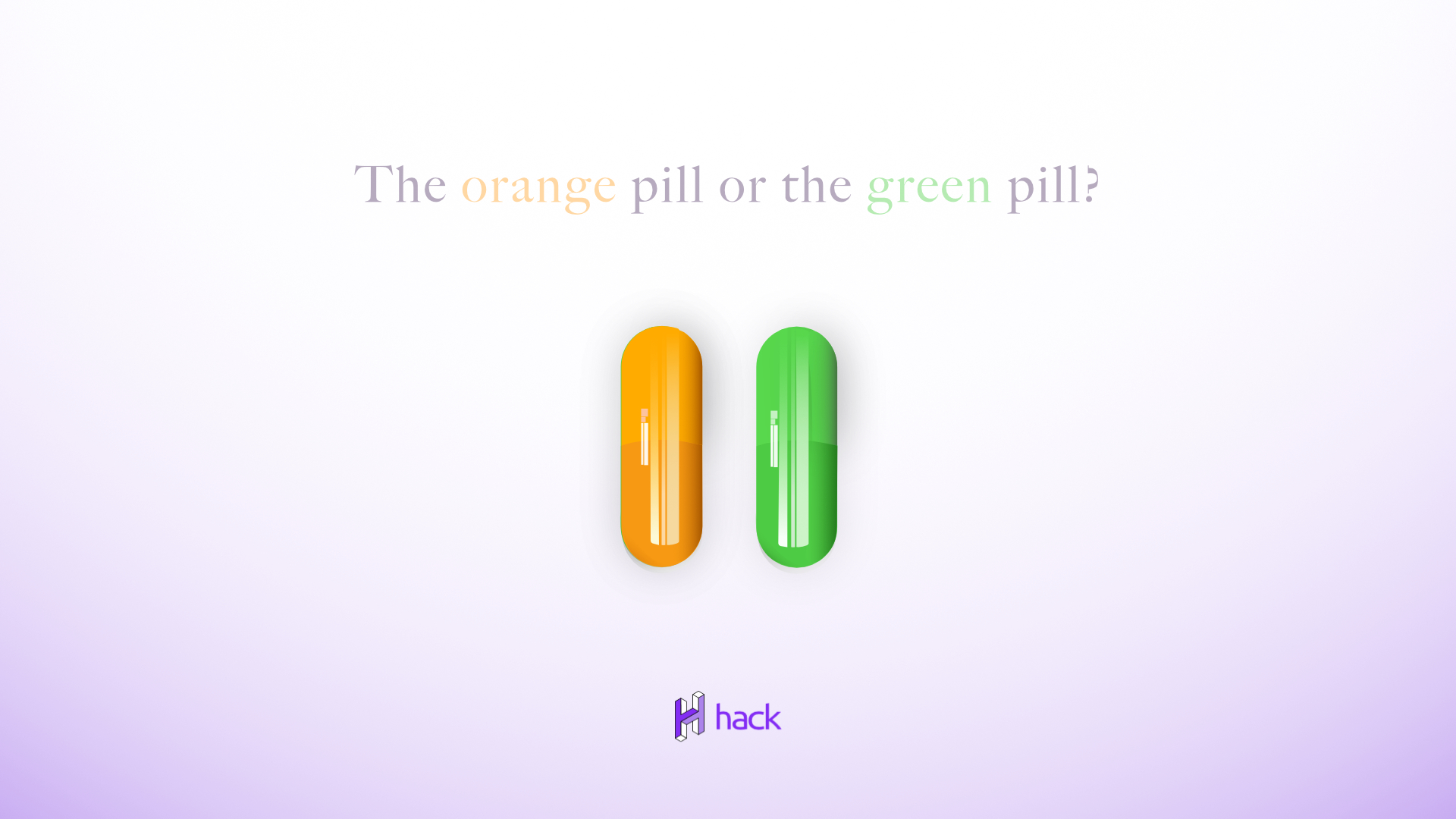The year is 2140 and the oldest cryptocurrency in the world – bitcoin – is just about to be mined.
Just like gold and other scarce assets before that, miners are about to dig the last portion of the 21 million bitcoins ever created.
Decentralization rules the world. Centralization lives only in history books. Government, banks, dollar, and other fiat currencies are ancient words. Newlyweds Bob and Klair just got back from their honeymoon to Mars and brought back NFT magnets for the fridge and just as they unpack Alexa announces – “The last bitcoin was just mined by…”; “higher transaction fees”; “new all-time-highs for bitcoin”; ” the price of bread is going up”; “what’s next for the economy?”
SNAP!
The thing is we don’t have a time machine (or we do, but that’s confidential), so we cannot say for sure if that’s far-fetched or a very plausible scenario, but it won’t hurt to think what would happen when the last bitcoin is been mined, no?
But, before we do that, let’s start by taking a look at why bitcoin’s supply is limited in the first place:
Why is bitcoin supply limited?
The hard limit of bitcoin’s supply is set at 21 million coins. This limit, known as the hard cap, is encoded in Bitcoin’s source code and enforced by nodes on the network, making bitcoin just like gold a scarce asset and a successful store of value because it is difficult to increase its supply. We can even argue that bitcoin is more scarce than the gold itself as nobody knows how much gold there is on earth and a random discovery of tons of gold worth mine could theoretically drive the price of gold down, inflating the market to a degree.
But “can this hard limit of bitcoin be changed” you may wonder.
Well, in theory, the developers of Bitcoin could change how bitcoin operates and increase the hard limit. That would need the majority of Bitcoin participants (nodes) to agree – which would decrease the value of the bitcoin they hold, so why would they agree to such a change?
How has this limited supply had an effect on bitcoin?
Economists are still studying the effects of bitcoin’s limited supply, and whether it would have the same failings as the “gold standard”. However, we can observe a slice of its early years and see its behavior.
2009 – Mining each block yielded 50 bitcoin, a whopping sum in today’s terms. Many of the earliest bitcoin wallets are lost to time and indifference, as bitcoin was just one of many cryptocurrency experiments of the time.
2010 – An American programmer traded 10,000 bitcoin for two pizzas. The first indicator of value.
2012 – First ‘halving’ – each block mined yielded only 25 bitcoins. The implied reduction in supply drove a large increase in value, taking one bitcoin to $200 by the end of 2013.
2016 – The second halving, where each block mined yielded 12.5 bitcoins.
2020 – The third halving, each block mined yielded 6.25 bitcoins. By this time, one bitcoin was valued at close to $10,000 and would climb to four times that in a year.
This small period of time can just show us that, as bitcoin got ‘harder’ to mine, the existing supply of coins rose in value. As of today, a pizza can be bought for 0.00027 BTC — and 10,000 bitcoins would buy 37 million pizzas.
What happens when the bitcoin supply runs out?
This might be a sensational event for all the bitcoin enthusiasts out there. Once miners have generated all coins, there will be no more BTC available for mining. bitcoin’s supply is nearing its limit. As of the time of the writing of this article (Sep. 2021), 18.78 million bitcoins have already been mined meaning 83 % of all the bitcoin that will ever come into existence have already been brought into circulation. This leaves a little over 2 million bitcoins to be mined. So what possible effects can users face?
Here are some notable implications of reaching bitcoin’s supply cap.
Impact on miners
The process of mining Bitcoin allows miners to gain rewards for every successful block verified in the network. Miners get two types of rewards from mining—a portion of BTC for every confirmed block and incentives that come from transaction fees, which are paid to the miners in exchange for their efforts in processing and verifying each transaction.
Higher fees allow miners to gain higher incentives. This is also their basis for prioritizing a transaction in the network. The higher the transaction fee you pay, the faster it is for your transaction to be included in a block.
When all bitcoin has been mined, the miners will no longer receive block rewards since there are no more coins to be generated. They will only earn from the transaction fees to be collected from every confirmed transaction. Miners can continue securing the network since they will still earn from the said fees. However, it is not sure if these fees will be enough for miners to provide sufficient resources for them.
Impact on Bitcoin mining and its network
Bitcoin’s price increase also implies an increase in miner’s transaction fees. Currently, the average fee for every Bitcoin transaction is 2.16 USD. Note that this fee was only at 1.40 USD last year, meaning this price can continue to spike in some events like a crypto boom. Fees might seem higher compared to USD because of many reasons though, such as the USD inflation of 5.25% for the past year alone, so it’s only fair to compare them in sats.
While this might be considered a piece of good news for bitcoin miners, there is no assurance that the cost of the mining process will remain high in the years to come. No one can tell the future of Bitcoin’s technology and how it will work in the near future.
If the mining process further develops and improves to the point where it is easy and cheap, this process can also be turned into another business. On the other hand, bitcoin mining is a process that many jurisdictions consider to have an adverse effect on the environment due to its high energy consumption level. If bitcoin mining’s energy efficiency improves in the future, miners can consider securing the network and stay in business.
Impact on market price and investment
How much bitcoin is left? As we’ve previously mentioned, only a little over 2 million BTC is waiting to be mined. When all these have been generated, bitcoin’s supply will be scarce, provably, which could eventually lead to an increase in price. We are even already witnessing this with gold and its price as it is considered that there will be no more gold in less than 30 years from now, though we cannot be really certain of this statement.
For investors, this is a great opportunity since bitcoin is a highly volatile asset—with extreme price gains and dramatic falls. This could possibly aspire investors to enter the market and try out investing.
Some thoughts:
It’s worth noting that it is projected to take more than 100 years before the Bitcoin network mines its very last unit of account. In actuality, as the year 2140 approaches, miners will likely spend years receiving rewards that are actually just tiny portions of the final bitcoin to be mined.
It’s also important to keep in mind that the bitcoin network itself is likely to change significantly between now and then. Considering how much has happened to bitcoin in just a decade, new protocols, new methods of recording and processing transactions, and any number of other factors may impact the mining process.
Other than this, there are questions also worth asking:
Is bitcoin going to be the lead, worldwide currency?
Are cryptocurrencies going to lead to new world order? Will they last and how are they going to be managed or governed?
Are we ready for full decentralization, if the masses are shaped to be bricks in the wall?
Will centralized giants allow such dethronement?
What are your thoughts on that? Give us your opinion in the comment section.



